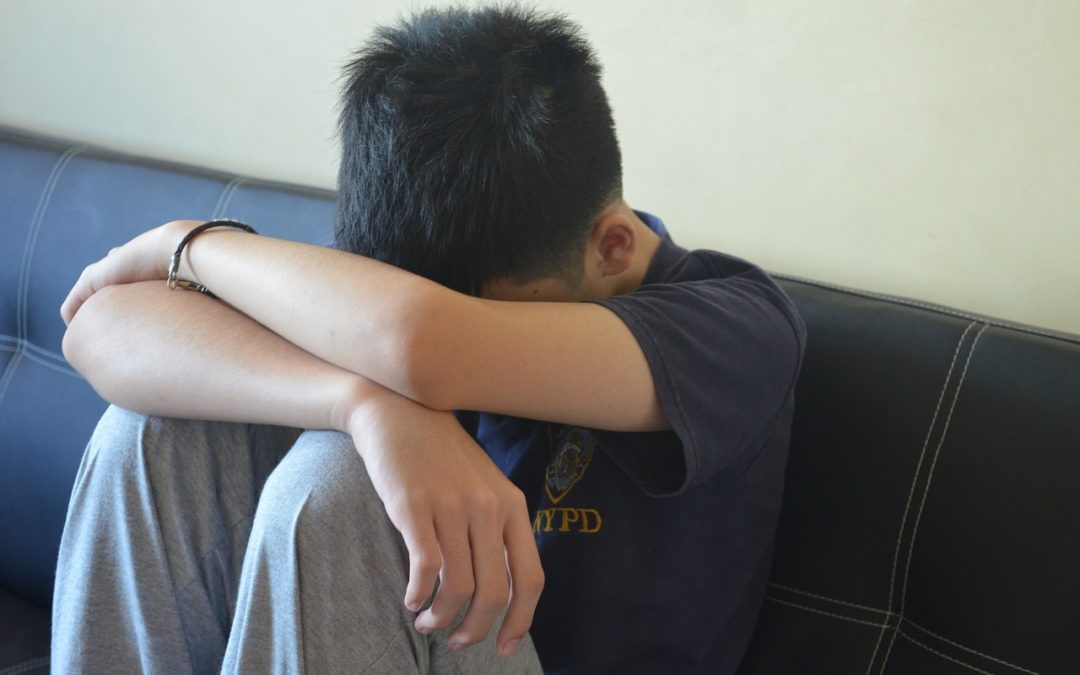
by David Gleason | Sep 13, 2017 | Blog
As millions of teenagers return to school after what hopefully has been a restful and restorative summer, an increasingly emphatic question is gathering strength: What time should the school day start?
Over the past few years, more school districts, as well as independent and international schools, have experimented with later start times in their deliberate efforts to “fall in line with research that looks at the biological clock of adolescents.” The results have been significant.
Business Insider author, Chris Weller, for example, describes how, at the Solebury School in New Hope, Pennsylvania, after last year’s decision to move the start time from 8:00 to 8:30 four days per week, and from 8:00 to 9:00 on one day per week, “students are less stressed and performing just as well, if not better, in their classes.”
Reinforcing these findings, superintendent of Dobbs Ferry School District, Dr. Lisa Brady, is also an advocate of later school start times. While she recognizes that delayed start times are growing in popularity, they are still rare. As Dr. Brady noted and as I emphasized in my book, At What Cost? “It has to do with a lack of empathy for pre-teens and teens. I get that years ago, we all walked a hundred miles in the snow to school, but we know better now about the adolescent brain, and we know about their natural sleep rhythms.”
In her wildly popular TEDx Talk, advocating later start times, sleep researcher, Dr. Wendy Troxel, states, “Sleep deprivation among teenagers is an epidemic” and highlights the data:
- About one in ten gets the 8-10 hours of sleep per night recommended by sleep scientists and pediatricians.
- Too many high schools start at 7:30 a.m. – or earlier – despite the fact that major medical organizations recommend that middle schools and high schools start no earlier than 8:30 a.m.
Around puberty, a young adolescent’s biological clock alters, a change driven, in part, by a shift in the release of the sleep-regulating hormone, melatonin. As a result, when they become sleepy and feel most wakeful changes. Teenagers’ bodies begin releasing melatonin later in the evening, around 11:00 p.m., a full two hours later than adults and younger children. Troxel notes, “Waking a teenager up at 6:00 a.m. [to go to school] is the biological equivalent of waking an adult up at 4:00 a.m.”
Chronic Sleep Deprivation has Negative Consequences for Mental and Physical Health
Wouldn’t we adults strongly resist being expected to wake up every day at 4:00 a.m. to begin our work days?
The truth is that chronic sleep deprivation – in adolescents and adults alike – manifests in a variety of unhealthy and dangerous ways: chronic anxiety; attention problems that mimic ADHD; car accidents and associated deaths; and too often, depression and suicide.
As I detail in At What Cost? and Dr. Troxel explains in her TED Talk,
“Advocates of sleep-friendly start times know that adolescence is period of dramatic brain development, particularly in the parts of the brain that are responsible for those higher-order thinking processes, including reasoning, problem solving and good judgement. When teenagers don’t get the sleep they need, their brains, their bodies and their behaviors suffer with both immediate and lasting effects.”
Alarmingly, in one study cited by Dr. Troxel with over 30,000 high school students, for each hour of lost sleep, there was a 38% increase in students’ feeling sad or hopeless, and a 58% increase in teen suicide attempts.
Study: Later School Start Times Have Economic Benefits
Adding another incentive to this school-start-time debate are the results of an exhaustive new study by the RAND Corporation and RAND Europe that examined the costs and benefits of proposed later school start times. That study found that 8:30 a.m. start times could add as much as $83 billion to the US economy over the next ten years. Marco Hafner, lead author of this study said in an interview “The increase in high school graduation rates and decrease in health concerns, such as rates of obesity and car crashes due to sleeplessness should more than make up for the hassles of putting the policy in place.”
Encouraging Schools to Make “Developmentally Empathic” Changes
At numerous schools and conferences in recent months, I have spoken of the many ways we can begin making “developmentally empathic” changes to reflect our increased understanding of the developing adolescent brain, particularly in light of how uniformly schools acknowledge that they overschedule, overwork, and may even overwhelm the adolescents for whom they are responsible.
In my book and in my presentations, I do not, and cannot, prescribe specific changes that all schools should make, as I know and respect the ways in which all schools differ, as each one has certain features, policies and traditions that make it unique. It is for these reasons that schools need to consider which “developmentally empathic” changes they need to make in light of their own cultures and historical practices.
Educators and Parents Alike See the Benefits to Later School Start Times
Nonetheless, at every forum at which I speak, unfailingly, at least one teacher, administrator, or parent has asked: “I know you can’t tell us what specific changes we need to make, but is there a single, most important change that all schools should be making in order to be ‘developmentally empathic?’” To this inevitable question, my response has been the same: “While I will gladly tell you what I think is the most important change to make, tell me, first, what you think I am going to recommend.” And again, unfailingly, these individuals – teachers, administrators, and parents alike – say “Later school start times?” To which I respond with a resounding “yes!”
In my experience, these intelligent, perceptive, and empathic adults know that changing school start times to 8:30 or later is indeed one of the most “developmentally empathic” changes they can make.
Unfortunately, many of these same adults get bogged down by competing arguments about the logistical challenges of reorganizing bus schedules; about needing to alter the practice and game times of after-school sports; or about arranging for appropriate child care before or after school. These are, indeed, legitimate concerns. However, these are “adaptive challenges” we can work through, and as Dr. Troxel declares, “These problems are NOT valid excuses for failing to do the right thing for our children … which is to start middle and high schools no earlier than 8:30 a.m.”
Are we ready to resolve this years-long debate and ensure that all middle and high schools would be starting at 8:30 or later? What do you think? I welcome your comments and questions.

by David Gleason | Jun 8, 2017 | Blog
After a recent presentation about my book At What Cost? Defending Adolescent Development in Fiercely Competitive Schools, an independent school health and wellness professional asked a provocative question:
“Dr. Gleason, you’re advocating for more free time for our students … but what if we give them that free time and they spend it all on their phones or other screens, just killing time on Facebook or Instagram or Snapchat or whatever? Do you think giving students more free time will just enable to have even more screen time?”
It is true – as hundreds of those I interviewed for At What Cost? have acknowledged – that students in competitive schools all around the world are incredibly overscheduled and are frequently overwhelmed. From this perspective, it seems only natural to recommend more “free time” in students’ otherwise frenetic schedules.
More Screen Time Can Be Damaging to Teen Brains
However, as recent studies have revealed, having “free time” that is consumed by “screen time” is not only unhealthy, it may even be damaging to adolescents’ still-developing brains, and by extension, their social and emotional development.
Consider the recent 60 Minutes episode entitled “Brain Hacking,” in which Tristan Harris, a former product manager from Google, explained that “Silicon Valley is engineering your phone, apps and social media to get you hooked.” Harris is a tech insider who “publicly acknowledges that the companies responsible for programming your phones are working hard to get you and your family to feel the need to check in constantly,” a phenomenon recently termed as “brain hacking.”
In light of this concern, Harris asked the question, “When these features are designed, are they being designed to most help people to live their lives, or are they being designed to hook people into using the product?” Harris also reminds us: “Never before in history have a handful of people at a handful of technology companies shaped how a billion people think and feel every day with the choices they make about these screens.”
According to Harris, technology designers “are shaping the thoughts and feelings and actions of people … they are programming people [and] the constant distractions of apps and emails are ‘weakening our relationships to each other,’ and ‘destroying our kid’s ability to focus.’”
Screen Time Produces Chemical Changes in Brains
Two years ago, in a May 2015 New York Times article featuring Dr. Delaney Ruston and her then released documentary film, Screenagers: What To Do About Too Much Screen Time, Dr. Ruston highlighted the role that dopamine plays in reinforcing cell phone use among teenagers. According to Dr. Ruston, “Screen time releases the chemical dopamine in the reward centers of the brain, and there is no other time in life when you’re as susceptible to that pleasure-producing chemical than in adolescence.”
Dr. Ruston highlights what I emphasize in my book, that the entire adolescent era is a “developmental sensitive period” – also termed “a critical period” – defined as a phase of human development when individuals are maximally sensitive to environmental experiences in the process of shaping and molding their brains.
Finally, in a January 2017 interview with Tom Bilyeu on Inside Quest, Simon Sinek not only reinforced the dopamine addiction inference but further described dopamine as the chemical most responsible for other addictions, too, such as to drinking alcohol, smoking cigarettes and gambling.
Cell Phones as “Dopamine-Producing Devices”
In that interview, Sinek referred to cell phones as “dopamine-producing devices” that have had a negative impact on millennials’ overall development, particularly pertaining to their sense of job satisfaction and to the strength of their relationships. Sinek rightly proclaimed that “job satisfaction” and “strong relationships” cannot be learned instantly from an app on a cell phone, but that these are human experiences that reflect continuing growth and development, or as Sinek explains, “these are slow, meandering, uncomfortable and messy processes.”
From these three related sources, we recognize that there are two major issues at play.
The first issue involves a problem of addiction – that for adolescents, because of their developmental vulnerability, there is “no other time in life” when they’re as susceptible to the addictive qualities of their “dopamine-producing devices.”
The second issue involves a problem of adolescents not developing the habits, mindsets, and skills that lead to more sustained well-being – to social and emotional strength and competence – because they’re spending too much time on their phones. While these are two different issues – addiction and development – they are closely interwoven, and for that reason, more difficult to resolve, too.
We return to the question: “If we give students more free time, are we just enabling them to spend even more time on their phones, just killing time on Facebook or Instagram or Snapchat or whatever?” From my perspective, the real answer is that there are not any easy answers. That said, however, there are answers, but like Simon Sinek’s explanation about “job satisfaction” and “strong relationships,” the answers to this “free time – screen time” question also reflect the “slow, meandering, uncomfortable and messy processes” that are inherent to any process of growth and development.
Goal of Free Time is to Promote Health and Well-being
Since the purpose of giving students more free time is to promote health and balance amid their otherwise unhealthy and frenetic schedules, it is this purpose that needs to remain central. Therefore, as we give students more free time, we also need to be more explicit about how we think they should use it.
- We need to set guidelines and have discussions with students about why we want them to have more free time.
- We need to talk with our students about the dopamine addiction research, and then emphasize their responding to that research in health-enhancing ways.
- We could encourage students to take breaks and talk – in person – with a friend or two.
- We could urge students to sit alone quietly – meditating, observing, resting, relaxing – without “checking in” to their devices.
- We could suggest that students take walks; read for pleasure; listen to music; write letters or draw pictures.
In fact, we could recommend that our students do anything that promotes their steady growth and development, either through direct human interaction, or through mindful meditation, exercise, reading, writing … or simply, by going out to play!
This question is quite complicated because it involves closely interwoven problems concerning features of addiction and development. These two phenomena, while predictable in certain ways, are experienced differently in ways that reflect adolescents’ unique school environments and life circumstances. For this reason, as noted above, no easy answers exist; no single list of rules, regulations or remedies can be applied to this issue that would address it uniformly.
Instead, in the absence of such technical solutions, the answers to this question have to be learned – realized and reinforced over time – as the adolescents who are experiencing these phenomena not only comprehend the complexity of the issues, but also, as they engage and continue health-enhancing activities, such as the ones identified above.
Essentially, if adolescents do this – guided by the adults’ wise direction – they will adapt. Under such intentional circumstances, adolescents will slowly grow and develop gradually, meandering sometimes uncomfortably – but still determinedly – toward more stable, healthy and successful lives.

by David Gleason | May 17, 2017 | Blog
I recently co-hosted a webinar, At What Cost? Defending Adolescent Development in Fiercely Competitive Schools, with my colleague Dr. Douglas Reeves from Creative Leadership Solutions. After the webinar, Doug and I received the following question from Dr. Catherine Smith:
What advice can you give elementary school educators who need to balance between high standards and sensitivity about children’s varying developmental levels?
My colleague Douglas Reeves responded with:
The critical issue in elementary school, and every level for that matter, is defining what “high standards” really means. Ideally, our expectations of students include the entire learning process, including not only acquiring knowledge, but deep inquiry, asking interesting questions, displaying a passion for learning, taking risks, admitting when they make mistakes, and demonstrating resilience after failure. Unfortunately, I often see other behaviors masquerading as “high standards” – perfect completion of homework, sullen compliance with adult authority, or the illusion of engagement by hands raised high in the classroom. So the first issue to address with the faculty is what “high standards” really mean in practice. With regard to the second part of the question, developmental levels, I would again ask for some clarify of definition. For example, I heard it frequently asserted that kindergartners are not “developmentally ready” for reading and writing, and yet children of the same age in the same district, sometimes in the same school, are reading and writing. Clearly that is not a matter of childhood development, but of adult expectations. Children are wired to inquire from the first time the toddler endlessly asks, “Why?” That’s the gift we need to nurture and encourage throughout their K-12 education. Equipped with that spirit of inquiry, kids can ask some surprisingly important questions in science, literature, mathematics, and every other realm of study.
I then added to Doug’s comments with:
As with many questions of this nature, I am always intrigued by questions involving the intersection of human development (cognitive, social, emotional and physical) and environmental expectations and demands. I strongly recommend that these educators prioritize “sensitivity about children’s developmental needs” over a focus on “high standards,” particularly if such “high standards” – supersede a balanced approach to educating “the whole child.” As we know from those 65-80 years of developmental theory about child development, all elementary school children are in very early stages of their development – cognitively, emotionally, socially, physically – and therefore, are highly vulnerable to any environmental pressures that overwhelm their emerging capacities. We tend to understand and appreciate this point more whenever we hear of young children being exposed to traumatic situations (neglect, abuse, loss, etc.), and then we intuitively empathize with these children, knowing that they are so powerless and vulnerable in these crises. While children’s exposure to traumatic circumstances and their being expected to meet “high standards” in school are obviously very different situations, there are some overlapping features and concerns. Essentially, and as I describe in my book (
At What Cost?), subjecting developmentally vulnerable children to consistent demands to meet the “high standards” expectations of their teachers and parents doesn’t usually result in a specific crisis-like event, but instead, it tends to result in children’s “slow burn,” their gradually become exhausted and “out of gas.” These kids look often like they have lost their steam … or have lost their energy and natural joy for life. One of my favorite developmental theorists,
Robert Kegan, has warned that when adults expect children and adolescents to function beyond their developmental capacities, the adults create a situation that is dangerous for both the adults (whose expectations are too high) and for the developing children and adolescents. As Kegan asserts,
“The cost to a person of being unseen, of being seen as the person-one-might-become rather than the person-one-is … is a bewildering experience of being unfairly demanded of.” So, my advice for elementary school educators?
- Prioritize knowing and continued learning about the actual developmental capacities of the children they are hired to educate.
- Treat (educate) children according to who they are, not according to who they might be … if they were able to meet such “high standards.”
Basically, subjecting young children to expectations and demands that are beyond their developmental status is an example of the “bewildering experience” Kegan identifies, as it risks children’s “being unfairly demanded of,” and that, too often, leads to their unhealthy outcomes.
I am curious to what you think? What advice would you give to Dr. Smith? Let me know in the comments.






